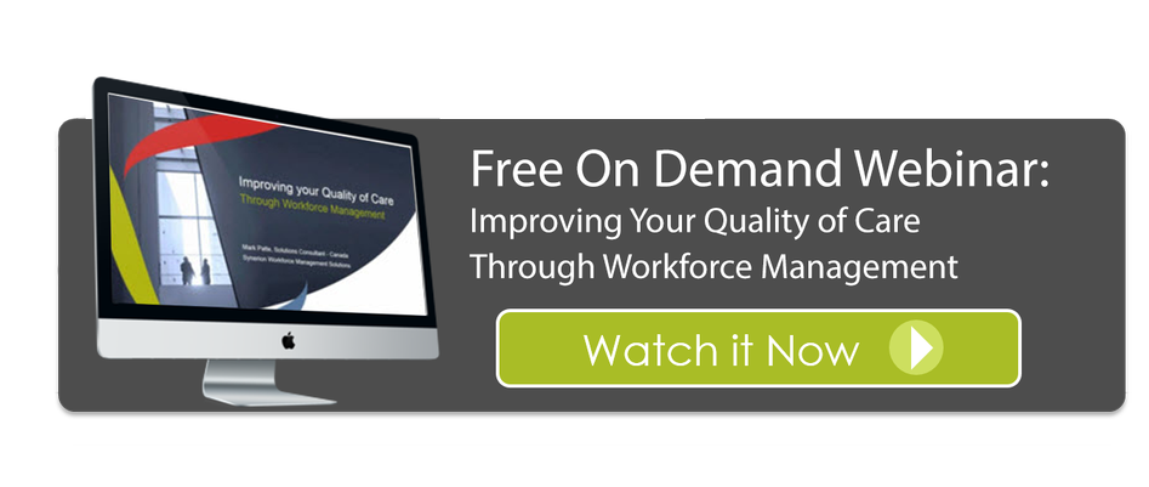
When health care facilities and organizations run into problems with health care staffing, it’s not only workers or administration that suffer, it’s also the patients themselves. Understaffing, overworked medical care professionals, improper allocation of people resources – these all have a significant impact on the patient experience. The statistics speak for themselves:
- One in five nurses working in Canadian hospitals leaves his or her job at an average cost to the institution of $25,000. This not only incurs significant costs to the system, but also places patients at risk for poorer health incomes (CNA, Cost of Nurse Turnover, 2009)
- Inadequate health care staffing and poor organizational support affect patient safety, not just in Canada but globally. In fact, 54.2% of nurses in one study said they have experienced fatigue and burnout which has affected the quality of care in their unit[1]
- More than 13,000 health care workers are absent from work in any given week because of injury, illness, burnout or disability – 80% higher than the Canadian average (Final Report of the Canadian Nursing Advisory Committee, Health Canada)
Despite these worrying stats, there are ways that health care planning issues can be alleviated. And when health care staffing is improved, it benefits institutions, workers, and patients alike. Here are 3 ways that better medical care staffing can improve patient care.
1. Lower Turnover, Better Care
According to the Canadian Nurses Association, high turnover of nurses not only represents a significant cost to the health system, it also places patients at risk for poorer health income. Thus, retention is a pressing medical care staffing issue.
The reason for this is simple. First, the role of the patient care professional who has left may be filled with an already overworked employee working overtime, which is costly to the institution but also hard on the employee. Second, when a new hire is placed, they need time to train and get adjusted. During this period, the level of care provided to patients can be adversely affected.
2. Better Allocation of Resources
Better health care planning means more effective allocation of people resources. Having an adequate number of staff, but also the right staff with the proper qualifications to service patients with diverse needs, fall under this. When health care institutions are able to identify how many, and what type of, employees they need for any given shift, they are able to ensure that they are equipped with the human resources necessary to provide the utmost care to patients.
3. Less Burnout, Illness and Injury
As already mentioned, understaffing and overworked employees are a serious medical care staffing issue. When patient care professionals are required to work very long hours, especially if they need to do so while institutions are understaffed, the result is burnout, increased illness, absenteeism, and higher susceptibility to injury. This in turn affects the quality of care provided to patients.
With better medical care planning, these no longer become such a huge issue. Properly staffed hospitals, reasonable working hours, and adequate organizational support can all serve to reduce the burnout, illness and injury – which ultimately serves to improve the care patients receive.
Effective health care staffing solutions mean better patient care, plain and simple. If health care institutions can manage their workforces in a way that improves common issues – understaffing, overworked employees, poor resource allocation – it benefits not only them, but also their staff and their patients.
[1] Aiken, L.H, et al. (2002). Hospital Staffing, organization, and quality of care. International Journal for Quality in Health Care, 14(1), 5-13.
